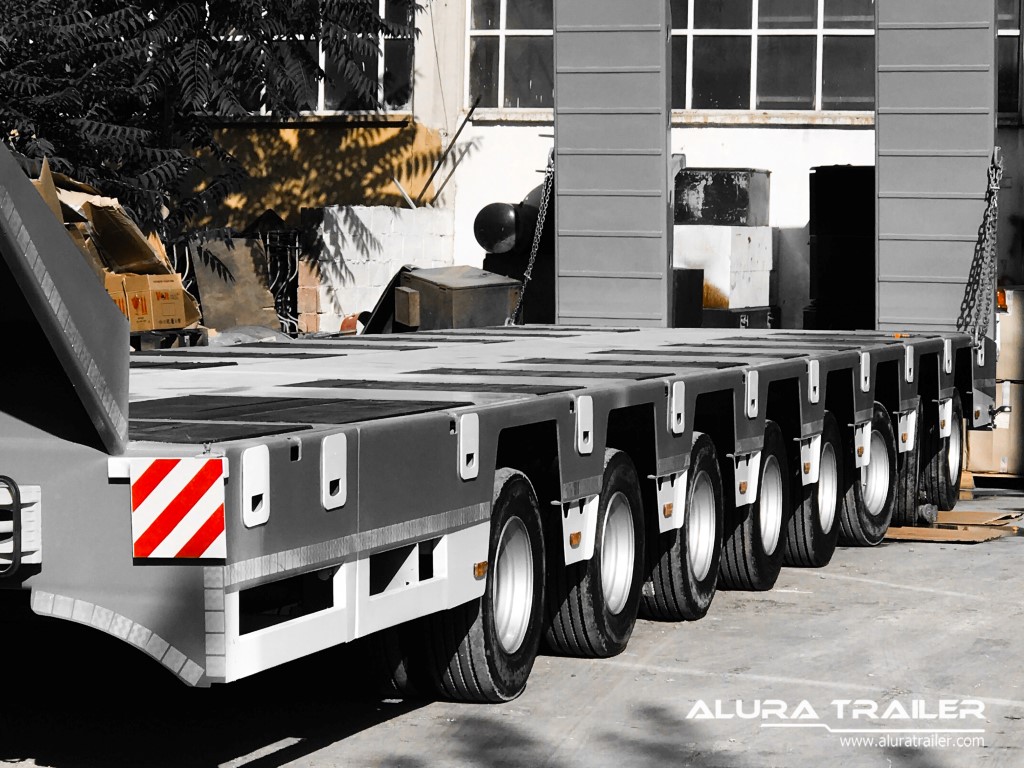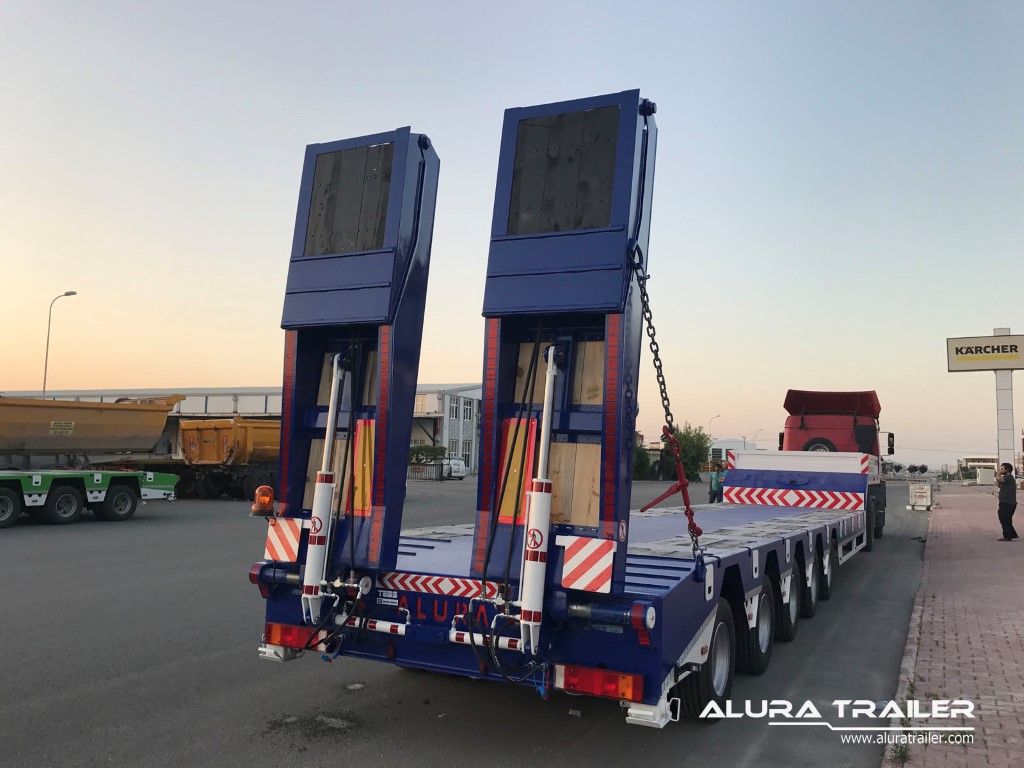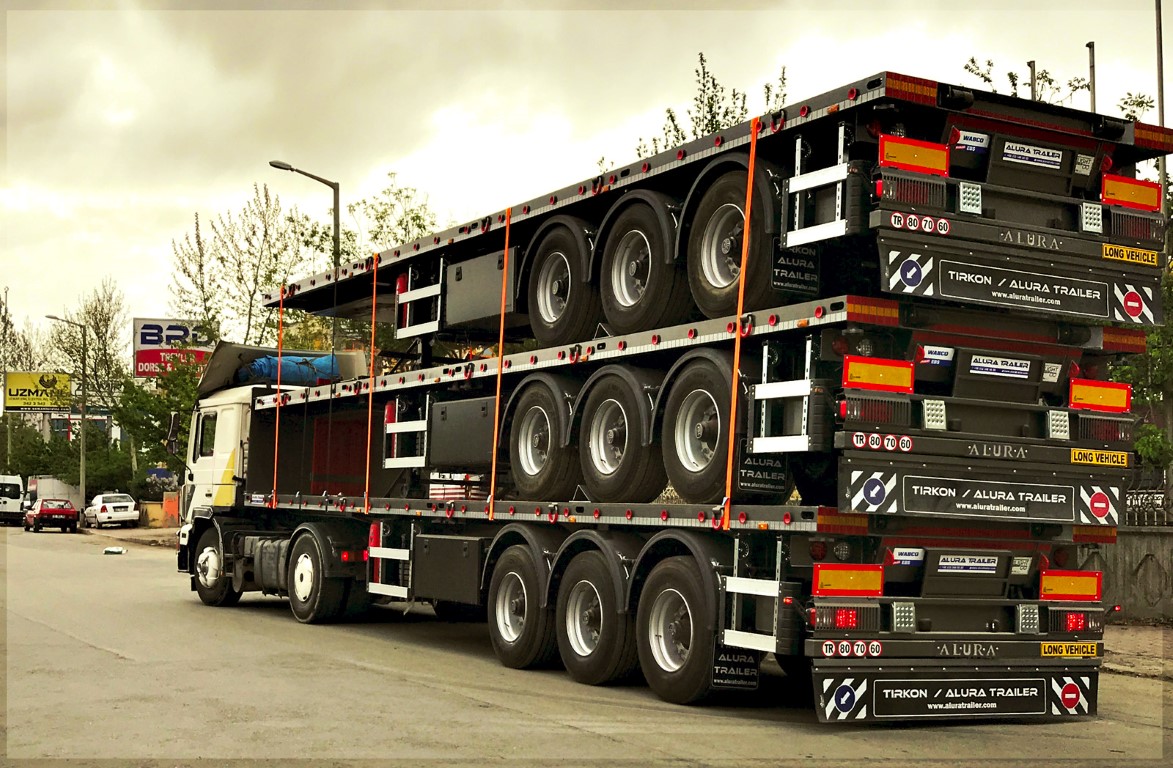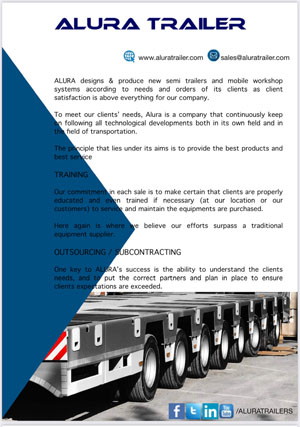Trailer & Semi Trailer Types
A trailer is generally an unpowered vehicle towed by a powered vehicle. It is commonly used for the transport of goods and materials.
Sometimes recreational vehicles, travel trailers, or mobile homes with limited living facilities, where people can camp or stay have been referred to as trailers. In earlier days, many such vehicles were towable trailers.
A semi-trailer is a trailer without a front axle. A large proportion of its weight is supported either by a road tractor or by a detachable front axle assembly known as a dolly. A semi-trailer is normally equipped with legs, called "landing gear", which can be lowered to support it when it is uncoupled. In the United States, a single trailer cannot exceed a length of 57 ft 0 in (17.37 m) on interstate highways (unless a special permit is granted), although it is possible to link two smaller trailers together to a maximum length of 63 ft 0 in (19.20 m).
Semi-trailers vary considerably in design, ranging from open-topped grain haulers through Tautliners to normal-looking but refrigerated 13 ft 6 in (4.11 m) x 53 ft 0 in (16.15 m) enclosures ("reefers"). Many semi-trailers are part of semi-trailer trucks. Other types of semi-trailers include dry vans, flatbeds and chassis.
Many commercial organizations choose to rent or lease semi-trailer equipment rather than own their own semi-trailers, to free up capital and to keep trailer debt from appearing on their balance sheet.
A full traileris a term used in the United States for a freight trailer supported by front and rear axles and pulled by a drawbar. In Europe this is known as an A-frame drawbar trailer. A full trailer is 96 or 102 in (2.4 or 2.6 m) wide and 35 or 40 ft (11 or 12 m) long.
A close-coupled trailer is fitted with a rigid towbar which projects from its front and hooks onto a hook on the tractor. It does not pivot as a drawbar does.
There is a number of different styles of trailers used to haul livestock such as cattle and horses. The most common is the stock trailer, a trailer that is enclosed on the bottom, but has openings at approximately the eye level of the animals to allow ventilation. The horse trailer is a more elaborate form of stock trailer. Because horses are usually hauled for the purpose of competition or work, where they must be in peak physical condition, horse trailers are designed for the comfort and safety of the animals. They usually have adjustable vents and windows as well as suspension designed to provide a smooth ride and less stress on the animals. In addition, horse trailers have internal partitions that assist the animal in staying upright during travel and protect horses from injuring each other in transit. Larger horse trailers may incorporate additional storage areas for horse tack and may even include elaborate living quarters with sleeping areas, bathroom and cooking facilities, and other comforts.
Both stock trailers and horse trailers range in size from small units capable of holding one to three animals, able to be pulled by a pickup truck or even an SUV; to large semi-trailers that can haul a significant number of animals.
Dolly Classification by Axle Configuration
There are two types of dolly bogie:
Full trailer - 2 axle (4 wheels), with a draw bar which also controls the trailer's front axle steering. The draw bar does not take load of the full trailer. Heavy full trailer needs to have its own brakes remotely controlled by the prime mover vehicle.
Semi-trailer - 1 axle (2 wheels), without the front axle but have a landing gear. Large semi-trailer of truck size is designed for connection via the fifth wheel on the tractor unit or the semi-trailer truck. Small semi-trailer such as travel trailer and boat trailer is design for connection via a tow hitch of a passenger vehicle. Either the fifth wheel or the tow hitch takes up to half to load of the semi-trailer.
Special large dolly bogie is equipped with a fifth wheel for further connection by the gooseneck type drawbar of another similar dolly and form a road train. The last dolly in a road train needs its own rear lights, brakes remotely controlled by the prime mover vehicle, and registration plate.
Tow Dolly
A semi-trailer designed as automobile rescue equipment. It is designed to couple to the concerned automobile's powered wheel, i.e. the front wheel of a Front-wheel driveautomobile, or the rear wheel of a rear-wheel drive automobile, by locking the powered wheels onto the tow dolly's tray. The tow dolly is tow hitch connected to a tractor or truck. Tow dollies are legal in all 50 US states and Canada. In the U.S. and Canada brakes are required on any loaded car tow dolly.
Dolly Classification by Coupling Configuration
There are two basic types:
- Converter dolly, equipped with between one and three axles and designed to connect to a towbar on the rear of the truck or trailer in front. There are two variants of this:
- A A-dolly has a single drawbar with a centred coupling.
- A C-dolly has two separate couplings side-by-side.
- Low loader dolly, equipped with a gooseneck type drawbar that attaches to the fifth wheel coupling on the rear of a prime mover to distribute the mass on the fifth wheel on the dolly between the prime mover and the wheels of the dolly. These are predominantly fitted with two axles.




